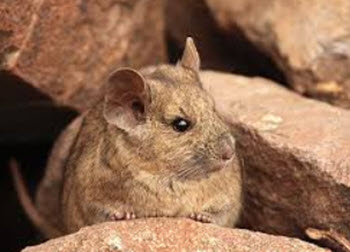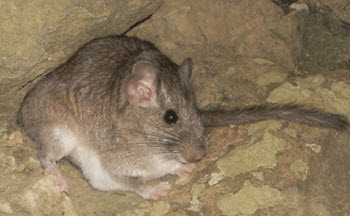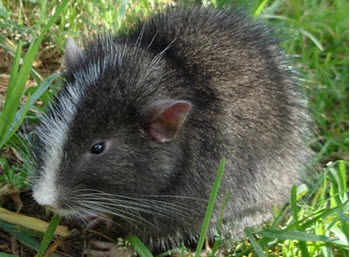Contents
The name Chinchilla rat is a bit misleading, because this is not a chinchilla. Also, it is not a close relative of rats such as the Black rat and the Brown rat, since they belong to the family Muridae while the Chinchilla rat is a member of Abrocomidae. They are all rodents however, belonging to the order Rodentia.

There are ten extant species of chinchilla rat. They are called chinchilla rats since they live in the Andes Mountains and have very soft fur just like chinchillas, but with a body structure more similar to that of a Black or Brown rat, albeit with a shorter tail. Just like chinchillas, chinchilla rats live together in herds.
Chinchilla rats are social animals and create tunnels together to seek shelter in.
In Spanish, these rodents are known as chinchillones, and this name is sometimes used in English as well. Their family name is Abrocomidae, which is a combination of two Greek words, ἁβρός which means delicate and κόμη which means hair. Thus, Abrocomidae means “with delicate hair” and is a reference to the very soft fur that keeps the Chinchilla rats warm in the cold Andes Mountains.
Scientific classification
| Kingdom: | Animalia |
| Phylum: | Chordata |
| Class: | Mammalia |
| Order: | Rodentia |
| Parvorder: | Caviomorpha |
| Family: | Abrocomidae |
| Genera | Abrocoma (extant)
Cuscomys (extant) Protabrocama (extinct) |
General information about the chinchilla rats
Genera and species
Genus Protabrocoma
This genus contains only one known species, Protabrocoma antigua, and that species is extinct.
Genus Abrocoma
With eight described species, this is the largest genus in the family Abrocomidae.
Abrocmidae species are found from southern Peru to southern Chile, and in several isolated mountain ranges in northwestern Argentina.
Species:

- Abrocoma bennettii: Bennett’s chinchilla rat
- Abrocoma boliviensis: Bolivian chinchilla rat
- Abrocoma budini: Budin’s chinchilla rat
- Abrocoma cinerea: Ashy chinchilla rat
- Abrocoma famatina: Famatina chinchilla rat
- Abrocoma schistacea: Sierra del Tontal chinchilla rat
- Abrocoma uspallata: Uspallata chinchilla rat
- Abrocoma vaccarum: Punta de Vacas chinchilla rat, also known as Mendozan chinchilla rat
Genus Cuscomys
This genus contains two species:
- Cuscomys ashaninka: Asháninka arboreal chinchilla rat
- Cuscomys oblativus: Machu Picchu arboreal chinchilla rat
Members of the genus Cuscomys live in the Cusco region in southern Peru. They are comparatively big. Their fur is dark gray, and they are adorned with a white line running from the crown to the nose.
The genus name is derived from the city of Cusco.
This genus wasn’t coined until 1999 when the species Cuscomys ashaninka was scientifically described. Afterwards, the species then known as Abrocoma oblivatus was moved from the genus Abrocoma to Cuscomys, thus becoming Cuscomys oblivatus.
Asháninka arboreal chinchilla rat (Cuscomys ashaninka)

When climbing the Vilcambamba Montains near Machu Picchu, Dr. Louise Emmons, a researchers of the Smithsonian Institution, serendipitedly encountered a chinchilla rat previously unknown to science. She described it in 1999, giving it the species name ashaninka after the Asháninka people who live in the rainforests of Peru and in the State of Acre, Brazil.
The Asháninka arboreal chinchilla rat is mostly gray, with a white nose and lips, and a white line of fur running down its head. It can reach a length of 30 cm (12 in) and weigh over 900 grams (32 ounces). The claws are big.
This chinchilla rat lives in a dwarf forest habitat at a high altitude. A dwarf forest is an ecosystem with miniature trees inhabited by small species of fauna, such as rodents and lizards.
Machu Picchu arboreal chinchilla rat (Cuscomys oblivatus)
We know very little of Cuscomys oblivatus. The only confirmed specimens are dead ones found in 1912; very old specimens that had been buried alongside humans in ancient Inca tombs at Machu Picchu.
In 2009, a photograph taken at the Machu Picchu ruins emerged that depicts a rodent that look as if it could be a Cuscomys oblivatus.
It is difficult to know if Cuscomys oblivatus only exist in very small numbers, or if we just need to study this remote area better.
